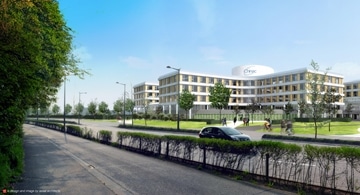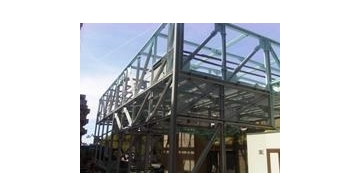A.Z. Sint-Jan, Cold production through absorption cooling
Already since the early years of its existence, Ingenium has been called upon for design of the technical equipment for a wide array of projects for the AZ St.-Jan Hospital at Bruges.
Already since the early years of its existence, Ingenium has been called upon for design of the technical equipment for a wide array of projects for the AZ St.-Jan Hospital at Bruges.
Already at the construction of the new hospital in the early seventies, Ingenium has been involved as engineering office in the design and monitoring of the implementation of all electro-technical systems in this building. Ingenium’s services were called upon again and again during the numerous renovation and extension projects.
For instance, Ingenium took care of the coordination around the reorganization of the radiology section, including installation of the very first NMR scanner, for which the logistic spaces had to be constructed completely non-magnetically, as an absolute filter for a broad spectrum of radiations.
Ingenium obtained also the order for optimization and renewal of the existing installations of the A.Z. Sint-Jan Hospital, within the framework of its Master Plan. Quite a few projects have been realized so far, such as the central entrance hall, the VE 125 and VE 235 treatment units, pharmacy, surgery centre, emergency room, mortuary, sterilization unit, stomatology, lab, etc. During all these renovations, the hospital remained completely operational.
In addition, Ingenium is acting as a consultant concerning energy management for the Technical Department. The ever-growing demand for cooling capacity in the hospital and the therewith-rising electrical costs require an economically and ecologically alternative solution. After intensive research, Ingenium developed a refrigeration system with an output capacity of 4.8 MW, by transforming the residual heat of the incinerators of the local waste processing plant IVBO into ice water at a 6/12° Celsius regime by means of absorption coolers.
The absorbed heat is evacuated in the Bruges-Ostend canal. The yearly energy cost savings by the A.Z. Sint-Jan Hospital are estimated at 50,000 euro. In addition, this alternative solution reduces CO2 emission by 8.4 %, which ensures compliance with the KYOTO requirements.
 CHIREC-DELTA
In Auderghem, near the E411 the new hospital CHIREC is stretching over 102.000 sqm construction area. Chirec has 6 campuses in the Brussels area and d ...
View page
CHIREC-DELTA
In Auderghem, near the E411 the new hospital CHIREC is stretching over 102.000 sqm construction area. Chirec has 6 campuses in the Brussels area and d ...
View page
 UZ Gasthuisberg Leuven - Nuclear Medicine
On the site of Gasthuisberg, university hospital UZ Leuven, the production laboratories for nuclear medicine are being renovated and extended.
View page
UZ Gasthuisberg Leuven - Nuclear Medicine
On the site of Gasthuisberg, university hospital UZ Leuven, the production laboratories for nuclear medicine are being renovated and extended.
View page